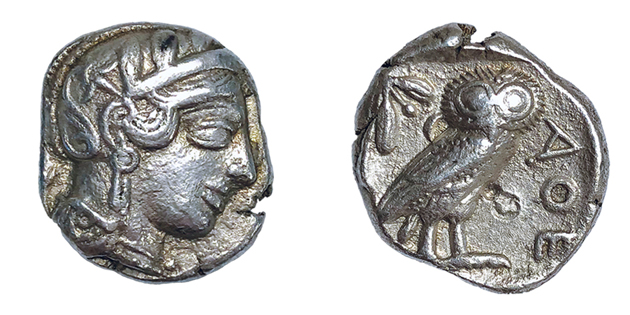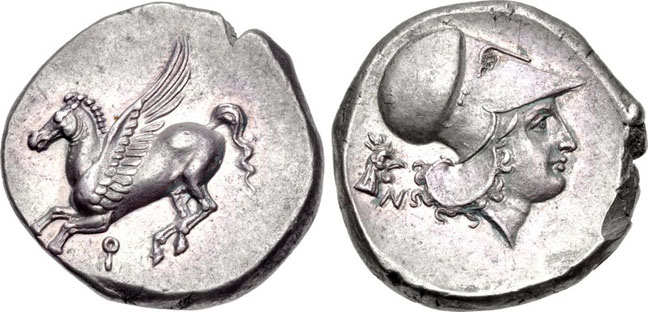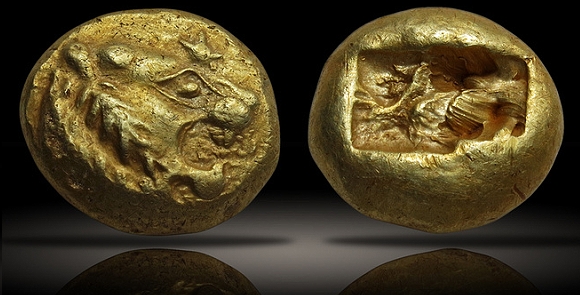Coins and their inscriptions are a key archaeological source by which historians reconstruct the culture, society and history of the ancient world.
Coins provide a wealth of knowledge, allowing us to trace chronologies of kings, hierarchies of gods and the ideology of ancient people.
If you look at the coins and notes in your wallet you will notice that they share the common pattern of depicting a profile or bust of a ruler or important person on the obverse, while the reverse bears the image of an important civic symbol – be it a building or an animal. This tradition began with the ancient Greeks.
Xenophanes, writing in the sixth century BCE, claimed that coinage was an Anatolian invention, originating in ancient Lydia.
Research of archaeological finds shows Lydian coins are the earliest dateable coins and that Lydia had ready access to a natural source of electrum- a naturally occurring gold and silver alloy, from which coins were first minted.
Greeks wholeheartedly adopted the system, and the way in which coinage spread through the Greek world and how readily it was accepted made coinage a truly Greek phenomenon.
Coins are an eloquent testimony to the autonomy of the city-states. Almost from their earliest appearance Greek coins used a combination of figures, symbols, and inscriptions to emphasize the independence and individuality of the poleis, depicting their patron deities and heroes, products, even visual puns on the cities’ names: Delphi- Dolphin, Leontini- Lion, Rhodos-Rose, Selinus- Parsley-rock celery, Tauromention- Bull, Melos- Apple.

Obverse – Head of Athena;
Reverse – Owl of Athens
Given the expense of electrum and gold, even small denominations were worth a considerable amount. For coins to be practical in a commercial context fractional coinage was introduced during the archaic period, the smallest of was one sixteenth of an obol weighing a minute 0.44mg. How coins as small as this were handled in everyday life is a mystery.
As a result, it was not long before a token coinage made from a base metal, usually bronze, became readily available and were significantly easier to handle.

Obverse – Pegasus (a mythological winged horse)
Reverse – The helmeted head of a goddess, usually identified as Athena.
Ancient Greek coins have made a significant contribution to art history. They not only represent the aesthetic ideals of the time but they provide miniature representations of numerous sculptural and architectural marvels, both sacred and secular, which until the coins were discovered we only had verbal descriptions.
The remarkable details in portraiture are a wealth of information about styles of the time as well as being tools for the expression of art and the communication of religious devotion and civic pride.



